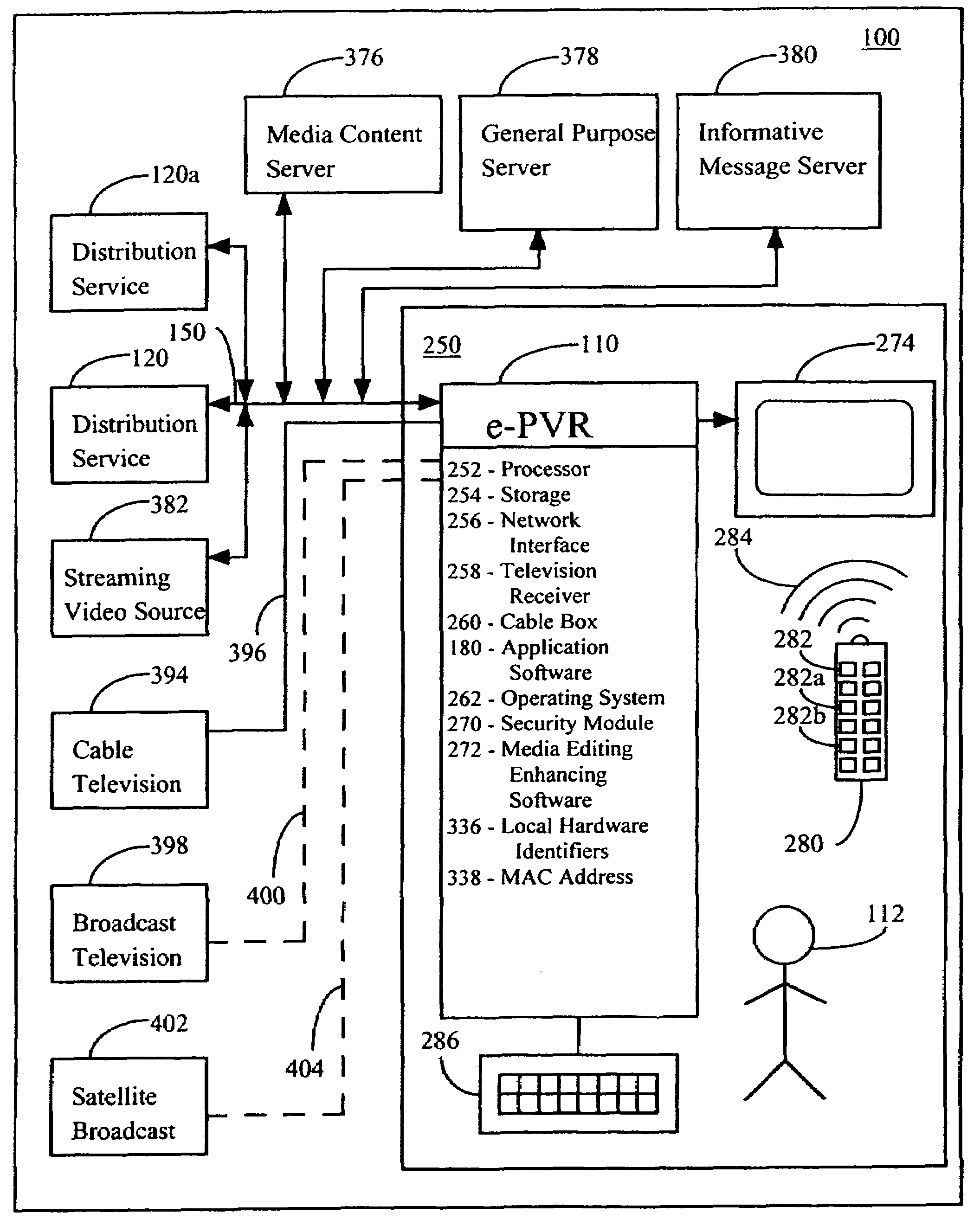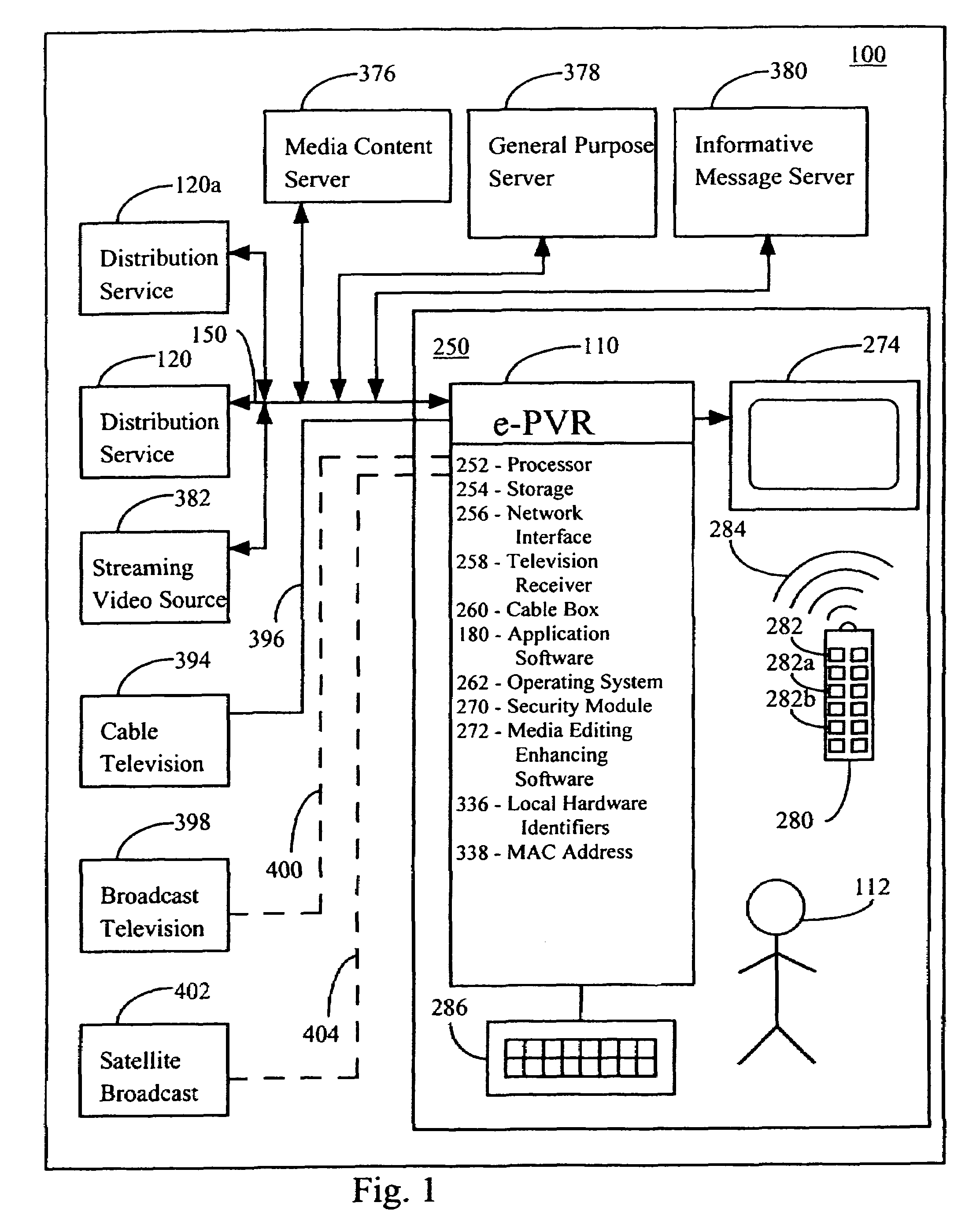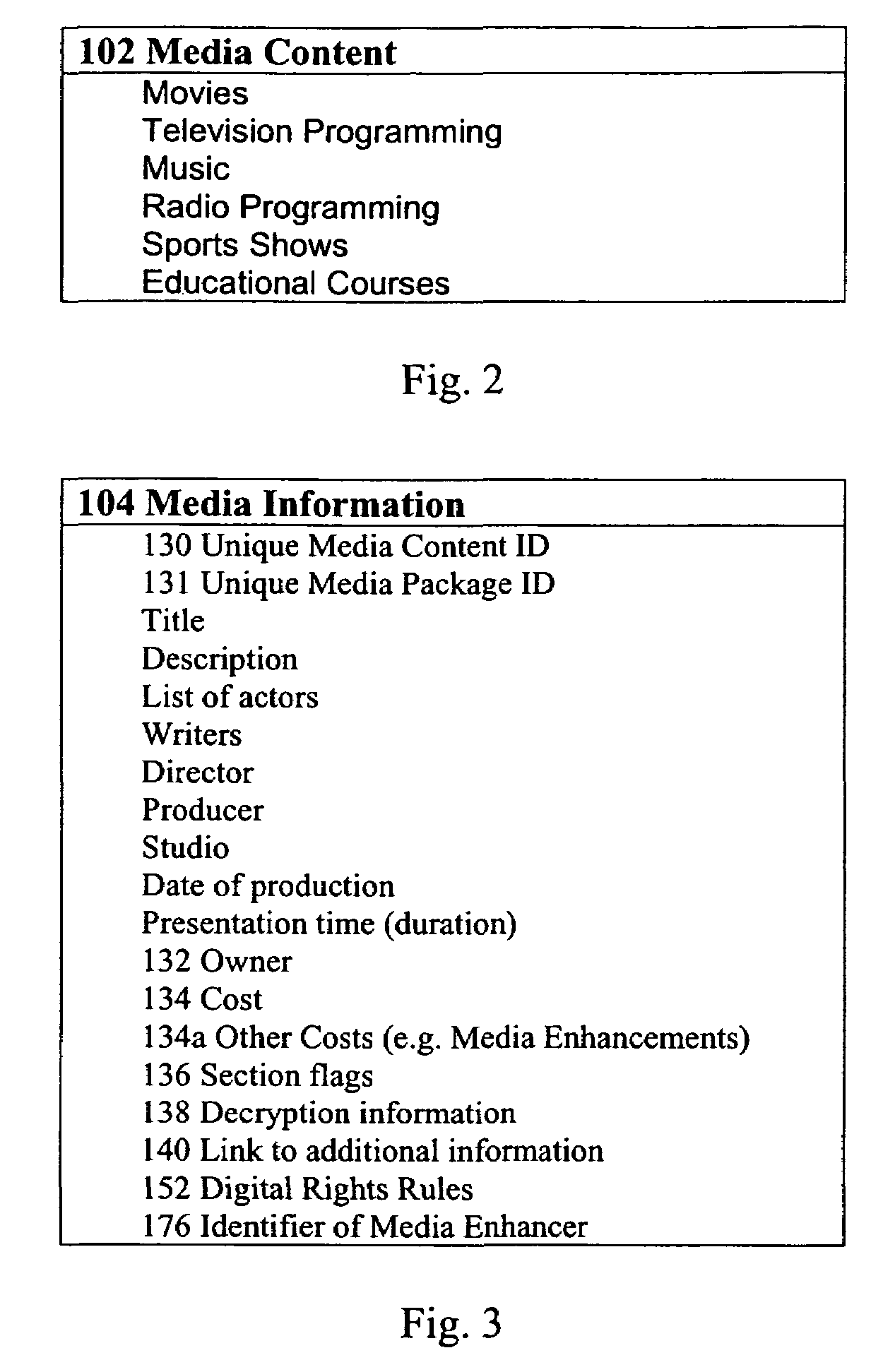Encryption method and apparatus for use in digital distribution system
a technology of digital distribution system and encryption method, applied in the field of encryption method and apparatus for use in digital distribution system, can solve the problems of reducing the revenue of movie studios and producers, affecting the quality of video content, so as to achieve the effect of increasing the level of security
- Summary
- Abstract
- Description
- Claims
- Application Information
AI Technical Summary
Benefits of technology
Problems solved by technology
Method used
Image
Examples
first embodiment
[0110]In the first embodiment e-PVR 110 interacts with at least one distribution service 120, storage 254 on e-PVR 110, media content server 376, a second e-PVR 110a, a third e-PVR 110b in a different digital system 250a, or transferred by commonly used media such as DVD, email, FTP or other protocols or any file transfer or data transfer methods including analog sources described above such as broadcast TV. Thus, a list of available media content 102 is provided to the user of e-PVR 110 to select from. By making a selection from this list, a specific media package 106 is retrieved for example, by processor 384d from a storage device 386d that is part of a distribution service 120 and sent to e-PVR 110 via network 150. This can be via any of a data transport protocol such as FTP, HTTP, or via an e-mail attachment or a simple read from disk operation or any other data transfer method. e-PVR 110 stores the received media package 106 as stored media package 306, as part of contents 330...
second embodiment
[0121]In a second embodiment, media package 306 includes SEPK 210 and service decryption information 212. In this case media content 302 is encrypted in such a way that a code, algorithm, or process or any combination of them, referred to as program key 200 can be used to decrypt it at any time. However, program key 200 is also encrypted using another encryption process and stored as SEPK 210. Information relating to how SEPK 210 can be decrypted is stored in service decryption information 212. Distribution service 120 uses service decryption information 212 to determine how to decrypt SEPK 210, for example using encryption / decryption server 370. SEPK 210 cannot be decrypted only using service decryption information 212, but further decryption information must be obtained from encryption / decryption server 370.
[0122]As before the user of e-PVR 110 selects media content 102 from a catalog of available media content 102 from distribution service(s) 120, 120a, media content servers 376,...
third embodiment
[0130]In a third and preferred embodiment, media package 306 includes program key 200 encrypted as SEPK 210, and includes service decryption information 212 as described in the second embodiment, but also additionally includes LEPK 220, and local decryption information 222. It is anticipated that media packages 106 in the other embodiments may be transformed to comport with this embodiment, for example by automated processes or as described below, while of course maintaining the security of the encryption systems in place.
[0131]As in the second embodiment media content 302 is encrypted in such a way that a code, algorithm, or process referred to as a program key 200 can be used to decrypt media content 302 and if needed, media information 304 at any time. However, program key 200 is encrypted as SEPK 210 and service decryption information 212 is also prepared, as in the second embodiment.
[0132]Certain payment options described below allow e-PVR 110 to send decryption request message...
PUM
 Login to View More
Login to View More Abstract
Description
Claims
Application Information
 Login to View More
Login to View More - R&D
- Intellectual Property
- Life Sciences
- Materials
- Tech Scout
- Unparalleled Data Quality
- Higher Quality Content
- 60% Fewer Hallucinations
Browse by: Latest US Patents, China's latest patents, Technical Efficacy Thesaurus, Application Domain, Technology Topic, Popular Technical Reports.
© 2025 PatSnap. All rights reserved.Legal|Privacy policy|Modern Slavery Act Transparency Statement|Sitemap|About US| Contact US: help@patsnap.com



